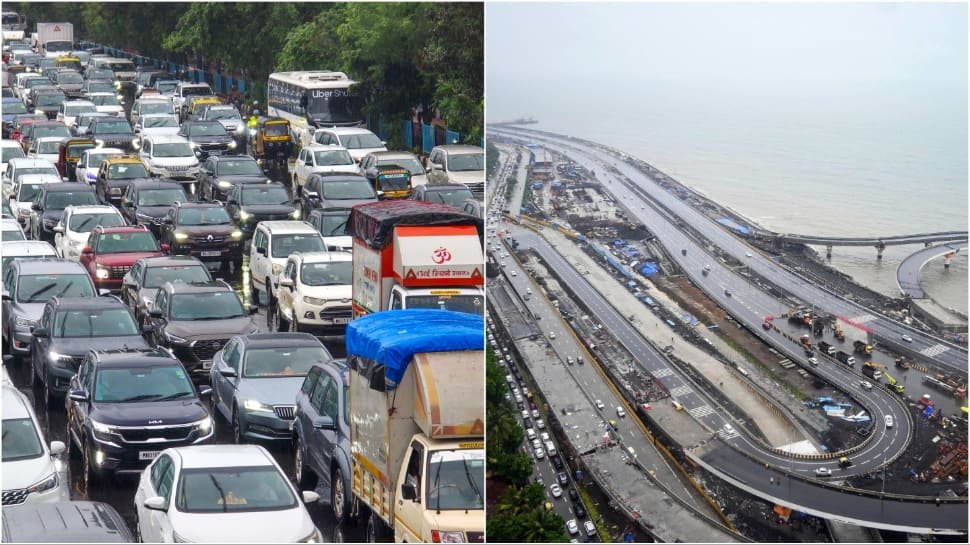Travel Guides & Articles
Changing the rules: How to keep your travel policy fit for purpose

What do fare unbundling, new distribution channels, Gen Z/Millennial travellers and even British
Airways’ controversial frequent-flyer scheme changes have in common? The answer
is that they all pose evolving challenges to travel managers fighting to keep
their company travel policy fit for purpose.
“I don’t envy travel managers now,” says Karen Hutchings, who left behind a
distinguished career as one to launch Cobb & Hutch Consulting in January
2024. “The fragmentation, the expectations of people, the tech that’s out there… it all makes it more complicated. It will take a lot of influencing by the travel
manager to fulfil the needs of the company as well as the needs of the
traveller.”
Pressure on policy is begng exerted by both external and internal sources, and often unexpectedly. Take BA’s
decision to make its Executive Club (now known as British Airways Club)
members, as of 1 April, earn membership tier points based on spend, not
distance flown – the change left many travellers unhappy and travel managers with a new challenge on their hands.
Indeed, at a Business Travel Association/Advantage event in London
earlier this year, travel managers were warned by Rob Burgess, founder and
editor of loyalty programme website Head for Points, to watch out for
travellers gaming the system. “They will try to book late, or at peak times and
generally to book the most expensive flight possible,” he said.
Meanwhile, ever more radical fare unbundling by airlines means new rules
are needed around which ancillary items travellers are and aren’t allowed to buy. ATPI
global programme director Alwyn Burrage recently saw an example where even in
long-haul business class an airline was charging £94 each way for passengers to
select their seats. “Basic policies are not fit for modern retailing,” says
Burrage. “They don’t have that level of flexibility.”
Internally, says Hutchings, “being completely rules-based doesn’t lend
itself to the new kind of traveller coming into the workplace. Travellers are
more vocal now. They ask the ‘why’ and it’s not always easy to explain.”
Nowhere is that ‘why’ harder to justify than ordering travellers to follow
rule number one in many policies: book through the appointed travel management
company. As BTN’s recent State of the Industry report underlined,
the inability of some TMCs to offer and manage the cheapest fares that are readily
available through airline.com and other websites is eroding trust in managed
travel programmes. “To tell somebody ‘you’ve still got to book through the
travel agency’ is a difficult sell now,” says Hutchings.
There are arguably even greater challenges to policy in the pipeline if
airlines start to personalise their offers as they have long promised. That would
take unbundling to new levels as different travellers are presented different
packages of ancillary options. “Static documents can’t deal with that,” says
Sarosh Waghmar, founder and chief product officer of travel technology
platform Spotnana. “Booking tools are not ready to deal with complex policy
configuration either.”
Fortunately, while technology is driving some of the policy pains that companies
are experiencing, it also promises to deliver some of the solutions. And, as Burrage,
Hutchings and Waghmar all say, if travel managers can combine new tech with new
thinking, they can reconcile those apparently conflicting needs of employer and
employee.
If you want people still to book through the TMC when they have found a lower fare elsewhere you are going to have a lot of explaining to do
Offer booking channel flexibility
Above all, travel managers can keep travellers happy by offering them as
much flexibility as possible in what and how they book.
Perhaps the most radical embracing of flexibility would be to drop the mandate
on booking through the TMC. Hutchings is one who believes that moment has now
arrived. “You should be able to collate data from people booking outside the
agency because to explain to a very tech-savvy person that you’ll lose track of
them isn’t an option any longer,” she says.
“Technology has advanced so much
now that you should be able to capture that. If you want people still to book
through the TMC when they have found a lower fare elsewhere you are going to
have a lot of explaining to do,” adds Hutchings.
Examples of tech and tools intended to gather data from off-programme
bookings include Traxo and SAP’s Concur TripLink, and Hutchings also encourages
travel managers to push preferred suppliers to provide reservation records sent
to travellers who booked through their company’s e-mail address.
Move to trip budgets
On frequently travelled city pairs, for which there is plenty of data to know
the average price, “give travellers budgets to build in flexibility,” says
Burrage. He argues that allowing employees to make their own transport and
accommodation choices not only makes them happier but also removes large chunks
of expensive approval processes. This, he says, should extend to a built-in
tolerance where sign-off is not needed even if the traveller slightly exceeds
the budget. “The cost of approval is potentially greater than the
over-the-limit spend,” says Burrage.
Moving to trip budgets is not without challenges. One is that trip costs
to the same destination vary, for example when the visit coincides with a major
trade show. According to Mário Pires, head of digital travel experience for
Nokia, technology is beginning to provide solutions. “Artificial intelligence
can detect that and set up a new temporary price threshold and even go into our
tools and change the settings without us needing to have direct input so people
can book within policy,” he says. “These are easy things that AI can do.”
Spotnana’s Waghmar agrees. “This is something we are actively working on and will be
going live soon,” he says.
Allowing travellers their own supplier choices also threatens the
delivery of agreed volumes towards targets with preferred suppliers. Again, says
Hutchings, new thinking is needed, this time about supplier relationships. Now, delivering traveller compliance is a responsibility for the supplier as well as
the travel manager, both to communicate and to offer traveller inducements. “It’s
moved on from thinking that a supplier agreement is just about price,” she
says. “What else do they bring, whether that’s status match, bonus points or
sustainability practices?”
Find your limits on flexibility
Even new technology and attitudes can take flexibility only so far. One
example is remote working: allowing employees to work temporarily from another
country. But speakers at the Institute of Travel Management conference in April
indicated this practice is in retreat because of complications such as tax
liability and exceeding the number of days UK citizens can spend in the
European Union and vice versa.
“We are reviewing our policy and recommending we remove it [remote
working],” said a travel manager at a financial services company. CIBT senior
vice-president of client solutions Samantha McKnight added that “companies are
pulling back”, either by shortening the period allowed for remote working or eliminating
it completely.
Use technology to make policy invisible
Given that employees are increasingly unlikely to read static company
documents such as a travel policy, travel managers need to embed policy rules within
employees’ automated processes. Configuring booking tools to prioritise
preferred suppliers is an obvious example, as is setting trip budgets as
discussed above.
Another idea, which is beginning to move beyond the drawing board, is linking
calendars to booking tools. “If you enter a trip in the calendar, I
automatically start pinging you with a proactive, personalised trip offer,”
says Waghmar.
If the traveller fails to accept, the system can send reminders,
including graphs showing the cost of travel rising closer to the departure date.
Should, say, a BA Club member continue to delay booking, then a clear audit
trail will show they had opportunities to book earlier and did not take them, at
which point they can be invited to provide a reasonable explanation. “Now we
all know who’s doing what,” says Waghmar.
Travel Guides & Articles
Zanskar: India’s deep, silent gorge where you can hear your own pulse
Zanskar: The untamed pulse of Ladakh
High in the Indian Himalaya, Ladakh is renowned for its stark beauty — the cobalt skies, the high mountain passes, the centuries-old monasteries that cling to its cliffs. Yet hidden within its rugged folds lies an even greater marvel: the Zanskar canyon. This is Ladakh stripped to its rawest essence, a gorge so deep and silent that it seems to hold the memory of time itself. Through it runs the Zanskar river, one of the most challenging and extraordinary white-water journeys in the world.
A geological cathedral
Unlike the celebrated high passes and monasteries of Ladakh, the Zanskar canyon remains little spoken of, even among seasoned travellers. Here, the landscape feels almost unearthly: cliffs burn red under the sun, streaked with copper and purple seams, while turquoise waters slice through their base. Waterfalls erupt directly from rock walls, plunging into the river below. The effect is that of a natural cathedral, vast and humbling, where time is measured not by hours but by bends in the river and the slow carving of stone.
A river alive
The Zanskar is no ordinary river. Glacier-fed and wild, it is alive with shifting moods. At times, it compresses into narrow corridors, releasing ferocious Class IV and V rapids that demand grit and precision. At others, it opens to skies so immense they seem to swallow the traveller whole. Many describe it as a living force — breathing, roaring, and singing beneath the sun. To enter its waters is not to conquer but to belong, if only briefly, to something larger than oneself.
More than rapids
An expedition down the Zanskar is as much a cultural journey as it is an adventure. Along its banks, monasteries dating back hundreds of years bear witness to the enduring spirituality of the region. Villages appear as pockets of resilience, their inhabitants living in tune with the seasons, still untouched by the curated experiences of mass tourism. The echoes of prayer wheels mix with the rumble of river and wind, while children wave from cliffside paths, their smiles carrying both curiosity and quiet blessings.
Evenings on the riverbank reveal another dimension of the journey. Camps at 14,000 feet offer the simple luxuries of warm meals, fresh fruit, and star-lit skies. It is in these pauses that the magnitude of the place truly settles: the bustle of the current, the stillness of the body, the reminder that the river demands respect rather than conquest.
A global classic under threat
For the global rafting community, Zanskar holds legendary status. Often called the “Grand Canyon of Asia,” it ranks among the world’s great river expeditions. Yet unlike the American Canyon, Zanskar remains without protection. Development creeps ever closer, with new roads and infrastructure threatening to alter the fragile balance of this landscape. The construction may bring accessibility, but it also risks eroding the ecological and cultural integrity that make the river unique.
Adventure travel pioneer Vaibhav Kala, who has guided expeditions here since the earliest days of river running in India, is unequivocal in his appeal for urgent action:
“As the roads connect remote Zanskar, governance is served. Now, we must preserve one of the grandest natural spectacles in the country, for our future generations; and preserve it with legislated protection, fierce in its ambit, with only responsible tourism allowed within the confines of what must be declared a National Sanctuary.”
A call for preservation
The Zanskar river expedition is not simply an adrenaline pursuit; it is an immersion into an elemental world of stone, water, and silence. It transforms the way travellers measure life, replacing the rhythm of clocks with the cadence of rapids, camps, and constellations.
But this transformation is possible only if the river is protected. Without decisive measures, one of India’s greatest natural treasures could be compromised beyond repair. The task before us is clear: to secure Zanskar’s future as both a global adventure classic and a national natural heritage monument.
In safeguarding the Zanskar, India would not only protect a spectacular river system but also uphold a legacy — a reminder that some places are too rare, too powerful, and too precious to be left unguarded.
Disclaimer: The views expressed in this article are those of the author/authors and do not necessarily reflect the views of ET Edge Insights, its management, or its members
Travel Guides & Articles
Afghan FM Muttaqi’s planned India visit put off over UN travel sanctions – Firstpost

Afghan foreign minister Amir Khan Muttaqi’s planned visit to India later this month has been put on hold after he failed to secure a UN waiver for foreign travel, officials said. The trip would have been the first ministerial visit from Kabul to New Delhi.
Afghan foreign minister Amir Khan Muttaqi was scheduled to visit India later this month, but the trip has been put off due to UN Security Council sanctions that restrict his foreign travel, PTI reported citing people familiar with the matter on Friday. The visit was postponed after he failed to obtain a waiver, they said.
Had it taken place, it would have been the first ministerial visit from Kabul to New Delhi since the Taliban seized power in August 2021.
Under the UN sanctions regime, Taliban leaders are required to secure special clearance for international travel.
When asked about reports of Muttaqi’s planned visit, External Affairs Ministry spokesperson Randhir Jaiswal refrained from a direct confirmation.
“We have longstanding ties with the people of Afghanistan. India continues to support their aspirations and developmental needs,” he said. “We continue to engage with Afghan authorities. If there is an update, we will share it with you.”
External Affairs Minister S. Jaishankar had earlier spoken with Muttaqi on May 15, marking the highest-level contact between the two sides since the Taliban takeover.
India has not recognised the Taliban administration, instead urging the formation of an inclusive government in Kabul. New Delhi has also maintained that Afghan soil must never be used for terrorist activities against any country.
Meanwhile, after a series of earthquakes struck eastern Afghanistan, killing over 800 people and injuring more than 2,800, India rushed urgent humanitarian aid to support relief efforts.
Following the collapse of the Ghani government, India shut its embassy in Kabul and evacuated staff from consulates in Kandahar and Mazar-e-Sharif. However, over the past two years, New Delhi has gradually expanded its engagements with Taliban representatives.
Since 2021, India has sent 50,000 tonnes of wheat, 350 tonnes of medicines, 40,000 litres of Malathion fertiliser, and 28 tonnes of relief material to Afghanistan, including assistance after the 2023 Herat earthquake.
Travel Guides & Articles
Your Ganpati Visarjan Travel Guide: Mumbai Police Release Full List Of Traffic Diversions And Alternate Routes | India News

As Ganpati Visarjan festivities are going to be organized throughout Mumbai today, the traffic police in the city have released an exhaustive advisory announcing diversions, alternative routes, and restrictions on traffic movement. Travelers are requested to make advance travel plans so as to avoid inconvenience.
Traffic Restrictions and No-Parking Zones
Some roads in Central Mumbai and the Western Suburbs will be impacted by the celebrations. The movement of goods vehicles is strictly banned on major roads to enable a smooth flow of pedestrian and festival traffic.
Central Mumbai:
- Worli: Dr. Annie Besant Road and RG Thandani Road: No parking.
- Dadar: Goods vehicles are prohibited on Gokhale Road, SK Bole Road, and Swatantravir Savarkar Marg. Parking stands prohibited on Swatantravir Savarkar Marg, MB Raut Marg, and Shivaji Park Road No. 5.
- Mahim: Goods vehicles are prohibited on Gen AK Vaidya Marg, LJ Road, Mori Road, and TH Katariya Marg.
- Matunga: Goods vehicles are prohibited on Tilak Bridge Road, and parking stands prohibited on Dr. BA Road.
- Kurla: Goods vehicles are banned on LBS Road, New Mill Road, and KK Krishna Menon Road.
In view of Anant Chaturdashi & Ganpati Visarjan following traffic arrangements will be in place in Central Mumbai.
Citizens are requested to plan their commute accordingly.#MTPTrafficUpdateshttps://t.co/gnNcQDYW0d
— Mumbai Traffic Police (@MTPHereToHelp) September 5, 2025
Western Suburbs:
Santacruz: Goods vehicles are banned on Devle Road and Vaikunthalal Mehta Marg. Parking is restricted on Janardhan Mahtre Road and Juhu Road, among others.
In view of Anant Chaturdashi & Ganpati Visarjan following traffic arrangements will be in place in Western Suburbs of Mumbai.
Citizens are requested to plan their commute accordingly.#MTPTrafficUpdates https://t.co/SY0R0p9e8z
— Mumbai Traffic Police (@MTPHereToHelp) September 5, 2025
DN Nagar & Goregaon: No-parking zones are in force on a number of important roads, such as JP Road and MG Road.
Kandivali: Goods vehicles are banned on KT Son Marg, Kalpana Chawla Chowk, and Abdul Hamid Road. MG Road and SV Road have no-parking zones.
Suggested Alternate Routes
To relieve congestion, the Mumbai Traffic Police have provided alternative routes to commuters. Motorists can travel via routes like Gold Spot Junction (Bisleri Junction) to Bahar Junction and Shivaji Chowk to Captain Gore Bridge (Parle Bridge) as effective alternates to travel within the city.
ALSO READ | Mumbai Bomb Threat Suspect Arrested In Noida, Police Thwart Ganesh Festival Scare
-

 Business1 week ago
Business1 week agoThe Guardian view on Trump and the Fed: independence is no substitute for accountability | Editorial
-
Tools & Platforms4 weeks ago
Building Trust in Military AI Starts with Opening the Black Box – War on the Rocks
-

 Ethics & Policy1 month ago
Ethics & Policy1 month agoSDAIA Supports Saudi Arabia’s Leadership in Shaping Global AI Ethics, Policy, and Research – وكالة الأنباء السعودية
-

 Events & Conferences4 months ago
Events & Conferences4 months agoJourney to 1000 models: Scaling Instagram’s recommendation system
-

 Jobs & Careers2 months ago
Jobs & Careers2 months agoMumbai-based Perplexity Alternative Has 60k+ Users Without Funding
-

 Education2 months ago
Education2 months agoVEX Robotics launches AI-powered classroom robotics system
-

 Podcasts & Talks2 months ago
Podcasts & Talks2 months agoHappy 4th of July! 🎆 Made with Veo 3 in Gemini
-

 Funding & Business2 months ago
Funding & Business2 months agoKayak and Expedia race to build AI travel agents that turn social posts into itineraries
-

 Education2 months ago
Education2 months agoMacron says UK and France have duty to tackle illegal migration ‘with humanity, solidarity and firmness’ – UK politics live | Politics
-

 Podcasts & Talks2 months ago
Podcasts & Talks2 months agoOpenAI 🤝 @teamganassi



















